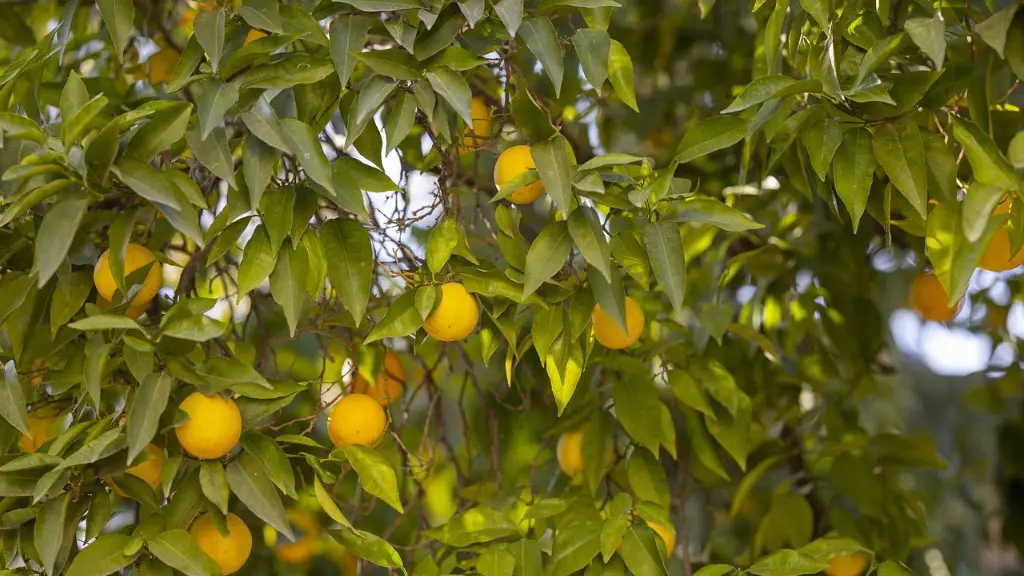Overview
Avocado trees can be pruned to keep them small. Pruning your avocado tree is beneficial not just for aesthetic purposes, but for physical and structural maintenance as well. Controlling the size of your avocado tree helps ensure it flourishes in a healthy and thriving environment, particularly for those living in urban areas with limited space. To prune your tree effectively and responsibly, it is important to understand the essentials of good pruning techniques, as well as the specific elements related to avocados.
The Basics of Pruning
At its core, pruning is the judicious removal of branches to improve the shape, structure, and size of a tree. Pruning is considered an art more than a science, incorporating both artistry and skill. It is important to understand that pruning is more than just trimming branches. Its purpose is to refine the overall shape of a tree and as a result, improve its growth potential, health, safety, fruiting ability and overall aesthetics. When done properly, pruning is an incredibly positive process that results in a healthier, more aesthetic tree.
Specifics of Pruning an Avocado Tree
When pruning an avocado tree, you should focus on three areas. First, you should direct your efforts on the removal of dead, broken, or diseased branches. These types of branches can sometimes create an unsightly appearance and impair the health of the tree. Secondly, you should consider removing any water-sprouts growing along the trunk of the tree and on the main branches. Water-sprouts are long, vertical shoots that often appear on the trunk of an avocado tree. If left unchecked, these branches can weaken the integrity of the tree and should be pruned out. Finally, you will want to remove serious crowding of branches. An excess of branches growing too close together can diminish the amount of light and airflow that flows through a tree which can negatively affect its overall health.
For aesthetic purposes, pruning an avocado tree can provide structure, control its size, and define the crown shape. Generally, it is best to prune avocado trees into an open vase shape with outward-facing primary branches, and a relatively low “skirt” of secondary, smaller branches. This helps open up the tree and provides the most aeration possible. When pruning, it is best to prune avocado trees during the winter when it is dormant. Pruning an avocado tree in the winter helps ensure the tree won’t use much energy to heal from the pruning and can instead put that energy into growth during the warm months ahead.
Preparing to Prune your Avocado Tree
Before you begin pruning, there are a few essential steps that you must take and supplies that you should have. Firstly, you should research the type of avocado tree you have, as different varieties may require slightly different pruning techniques. Secondly, you should make sure you have the right tools. Pruning shears, saws, ladders, and stepstools are the most common tools to have on hand when pruning an avocado tree. Lastly, you should be prepared to clean up any debris that results from the pruning process. Branches and leaves can be placed in yard waste bags or can be composted.
Pruning an Avocado Tree
When pruning an avocado tree, you should begin at the top of the tree and start by removing one or two of the tallest branches that are growing upwards. This helps reduce the overall height of the tree and provides enough light and airflow for the other branches lower on the tree. Once you’ve removed the tallest branches, you can start pruning the sides of the tree. Work from the outside in, removing any overly crowded branches. Aim to open up the canopy of the tree and reduce the overall branch density.
When pruning branches, you want to make sure to use the three-cut method. This involves using three cuts to remove a branch. The first cut should be made from the under side of the branch, approximately 6–12 inches away from the trunk. Cut the branch until it almost breaks, but not quite. The second cut should be made just above the branch collar. This is the swelling area of the trunk where the branch joins the trunk of the tree. Finally, the third cut should be made a few inches above the branch collar to completely remove the branch.
When pruning, always exercise caution when handling tools and take measures to protect yourself. Make sure to wear sturdy gloves and safety glasses while handling tools. Additionally, you should never stand on a ladder when your feet can’t touch the ground.
Caring for an Avocado Tree After Pruning
Once you are done pruning an avocado tree, it is essential to take steps to help ensure the tree’s growth and health. You should water the tree enough to re-establish the water balance within the tree. This can help reduce the tree’s shock from having its branches removed. Additionally, if you have added fertilizer to the soil along with the water, it can help promote added stability and nutrition for the tree.
Correct Cutting Techniques
When pruning an avocado tree, it is important to use the correct cutting techniques. You should use a saw or pruning shears to make sure the cut is clean and smooth, avoiding any jagged edges which can lead to disease and injury to the tree. Additionally, you should prune off all dead or diseased branches and stems. This helps reduce the chance of an infection or disease spreading to the rest of the tree.
Benefits of Pruning
Beyond controlling the size of your avocado tree and making it more aesthetically pleasing, there are several other benefits to pruning. Pruning encourages greater production of fruits, allowing your avocado tree to reach its full potential. Additionally, pruning helps the branches of your tree to maintain its strength by removing excessively vigorous shoots. This ensures the tree remains healthy and strong.
Common Mistakes
There are some common mistakes to avoid when pruning an avocado tree. Never top an avocado tree, as it will create an unsightly and unsafe look. Additionally, make sure to never prune during the cold months, as the tree will react more severely and be more likely to suffer an infection. Finally, do not rip, pull or break off any branches, as it may increase the chances of disease and decay.
Alternatives to Pruning
Alternative to pruning your avocado tree is to plant it in a container or in a restricted growth zone. This helps reduce both the overall size and canopy spread of the tree, making it easier and quicker to maintain. Additionally, container or restricted growth zone avocado trees will flourish in both pot and land-bound areas and are much safer than large trees with long branches and loose foliage. This can be beneficial for those living in bustling urban areas with limited space.
Maintenance and Safety
When pruning an avocado tree, you should always keep safety and maintenance in mind. Make sure you do not prune a broken, damaged, or diseased tree heavily and always use the right tools. Additionally, after pruning, you should protect the tree with a sealant or wax to help keep moisture in and sealing any wounds. This helps reduce the chance of any diseases or infections occurring on the tree.
Provide Support
In the months following pruning your avocado tree, it is important to be proactive in providing support and guidance to the tree. Check the structure of the tree often and make sure the tree is upright and stable. Additionally, if the pruning has been extremely severe, you may need to provide additional staking or guy wires to further help stabilize the tree’s structure.
Additional Pruning Techniques
Pruning techniques for an avocado tree can vary depending on its age and type. For young avocado trees, pruning can help shape and establish the tree’s structure, help reduce competition to the trunk, open up the canopy to allow adequate light, and reduce overall size. For mature avocado trees, pruning should be focused on controlling the overall size and shape of the tree, as well as removing any dead, diseased, or overgrown branches.
Summary
Pruning an avocado tree is an incredibly beneficial practice, not just for purposes of aesthetics, but also to help ensure the tree’s health and stability. To properly prune an avocado tree, you should focus on three main areas: removal of dead, broken, or diseased branches; removal of water-sprouts; and removing serious crowding of branches. Additionally, make sure to have the right tools and use the correct cutting techniques, such as the three-cut method. After pruning, make sure to provide additional support and care for the tree and keep safety in mind. With all of these elements in mind, you can effectively prune an avocado tree and create an aesthetically pleasing, healthy, and thriving tree.


